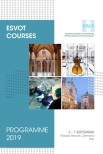Objective: To biomechanically evaluate an ultrahigh-molecular-weight polyethylene (UWMWPE) suture for temporary tarsocrural immobilization as a potential alternative to the existing surgical method, which uses a 4.5 AO/ASIF calcaneotibial cortical screw.
Study design: Randomized in vitro biomechanical study.
Animals: Pelvic limbs (n = 20) from 10 euthanized adult dogs (average bodyweight of 29.9 kg ± 1.9 kg).
Methods: Tarsocrural joints were immobilized either with a 4.5 AO/ASIF screw or a 1 mm diameter UHMWPE suture. Limbs were loaded with 60 N, 120 N, and 180 N, each for 100 cycles. After cyclic loading, immobilizations were loaded until failure. Load at failure and mode of failure were recorded.
Results: Both immobilization methods remained intact during loading with 60 N, 120 N, and 180 N. Mean and standard deviation (± SD) failure loads were higher for the cortical screw (524.9 N ± 148.7 N) than for the UHMWPE suture (387.8 N ± 105.6 N), P = .0084. The stiffness of both systems was equivalent.
Conclusion: Both techniques were suitable for transarticular tarsocrural immobilization in large-breed canine cadavers. While load at failure was higher for the screw compared to the suture construct, stiffness of both methods was comparable based on the laboratory settings in this in vitro study.
Clinical significance: Based on the results of this study, both the cortical screw and the UHMWPE suture stabilized the tibiotarsal joint at clinically relevant loads. However, when exposed to high loads, the cortical screw provides increased tibiotarsal stability. Comparative data need to be collected prior to widespread use of UHMWPE sutures in clinical cases.









